Top 8 Most Beautiful Historical Sites in Leicestershire
Leicestershire is a county in England. This place is an ideal tourist destination for tourists. Leicestershire awaits you. Don't miss the historical sites, ... read more...museum culture and academic atmosphere during your travels. Let's find out with Toplist the most beautiful historical sites in Leicestershire!
-
The first position on the list of the most beautiful historical sites in Leicestershire is Leicester Cathedral. It is located in Leicester, England. Following the creation of a new Diocese of Leicester in 1926, the church was upgraded to a college church in 1922 and designated a cathedral in 1927.
The medieval Old Town of Leicester is close to Leicester Cathedral. King Richard III's grave is famously located inside the Cathedral. The church, which honors St. Martin of Tours, a Roman officer who later became a bishop, was constructed on the site of Roman remains. A component of the current structure can be traced back to a 12th century Norman church that was renovated in the 13th and 15th centuries, and it is almost likely one of the six churches mentioned in the Domesday Book (1086). St. Martin's became Leicester's Civic Church in the Middle Ages and had close relations with the town's guilds and merchants because of its location next to the Guild Hall of Leicester.
A 220-foot-tall spire that was erected in 1862, a sizable nave and chancel, and two chancel chapels make up Leicester Cathedral, a Grade II* listed structure. The structure has undergone numerous restoration initiatives throughout the years, including work by the Victorian architect Raphael Brandon, and today it still mainly retains its Gothic architectural features. Charles Nicholson designed and Bowman of Stamford carved the huge wooden screen dividing the nave from the chancel inside the cathedral. As part of van Heyningen and Haward Architects' 2015 renovation of the Chancel, the screen was shifted to the east to stand in front of Richard III's tomb.
Location: St Martins House, 2 Peacock Ln, Leicester LE1 5PZ, England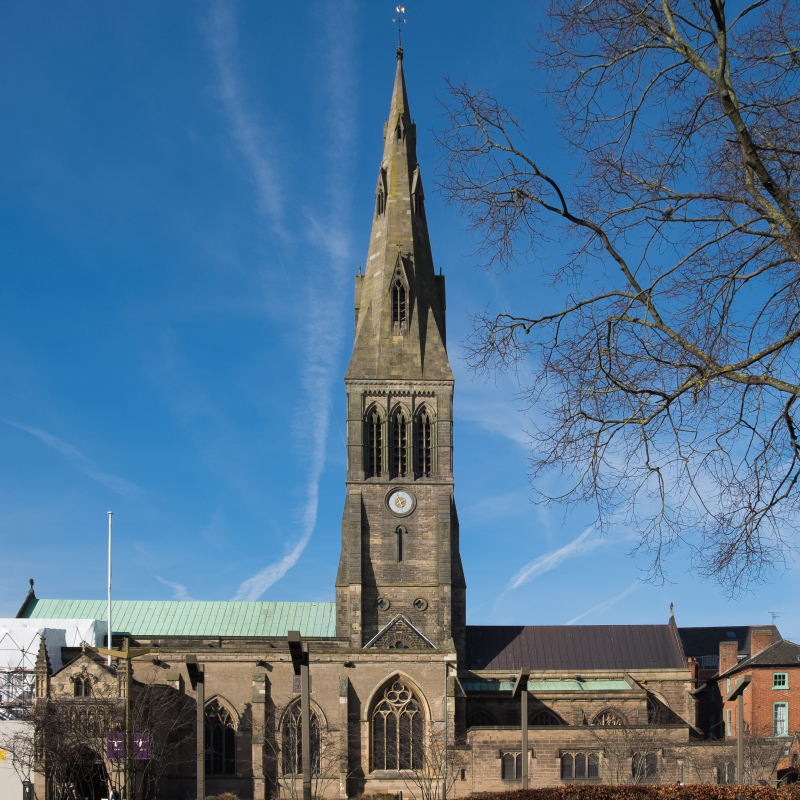
Photo: wikipedia 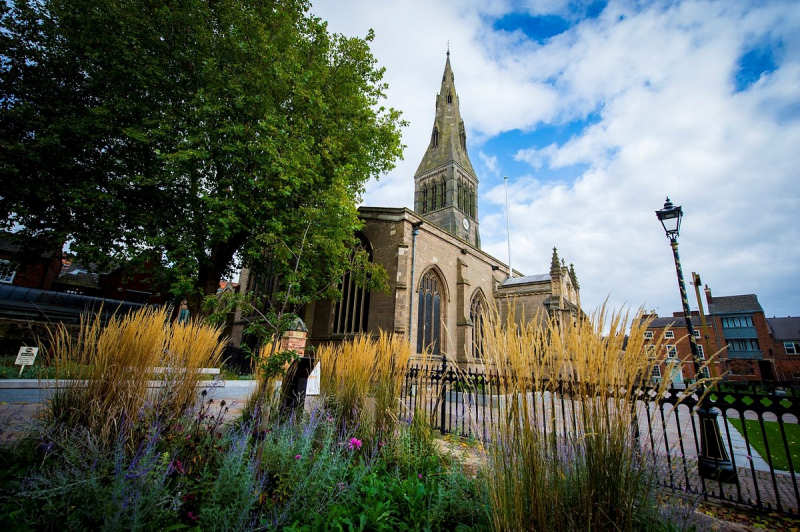
Photo: tripadvisor.com.vn -
The earliest portion of Leicester, Leicester Guildhall, a timber-framed structure, dates to around 1390. Before the current one was built in 1876, the Guildhall served as the city's town hall. It is situated on a roadway now known as Guildhall Lane in the former walled city. It served as the Guild of Corpus Christi's first meeting location and later the more formal Corporation of Leicester. The hall served a variety of functions, including council meetings, feasts, court hearings, and theatrical performances; it was also used to address the ultimatum sent to the city during the English Civil War.
The Guildhall served as a venue for celebrations and banquets as well as the residence of the priest who offered up prayers for Guild members' souls at the nearby St. Martin's Church. By the end of the 14th century, the Guildhall was purchased by the Corporation of Leicester.
In 1876, the Corporation relocated to the brand-new Leicester Town Hall. Later, it was also utilized as a school in addition to the police station. However, the structure was deteriorating rapidly, and by the 1920s, plans to remove the structure existed. Following the Leicestershire Archaeological and Historical Society's assistance, the council started restoration work on the structure. It was completed in 1926 when the Guildhall was inaugurated as a museum.
Location: Guildhall Ln, Leicester LE1 5FQ, England
Photo: storyofleicester.infor 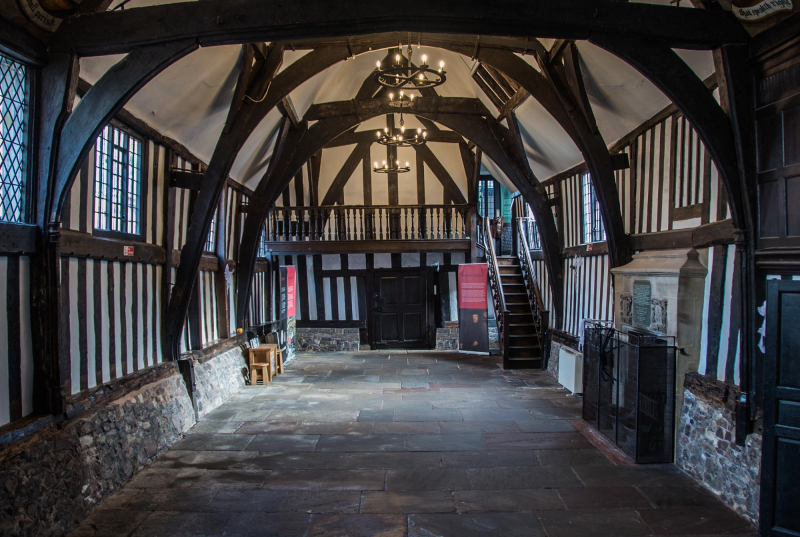
Photo: leicestermuseum.org -
In the English county of Leicestershire, Burrough Hill is an Iron Age hillfort located in Burrough on the Hill, 7 miles (11 km) south of Melton Mowbray. The site, which is perched 210 meters (690 feet) above sea level, offers expansive views of the surrounding countryside for miles in all directions. The hillfort was built in the early Iron Age, but there had been people in the area at least since the Mesolithic. The hill was used as farmland during the Middle Ages after the hillfort was destroyed. When the parish where the hill was was enclosed in the 17th century, this came to an end. Where the medieval fields were plowed can be seen by ridge and furrow traces.
The location has been the focus of archaeological investigations since the 1930s, and additional excavations under the direction of the University of Leicester started in 2010. The hillfort is preserved as a Scheduled Ancient Monument and is a part of Burrough Hill Country Park, which is accessible to the general public. "Sites like Burrough Hill were the closest thing we had to a town before towns like Leicester ever developed," says archaeologist Dr. Jeremy Taylor. Burrough Hill Iron Age Fort is one of the most beautiful historical sites in Leicestershire
Location: Burrough on the Hill, Melton Mowbray LE14 2QZ, England
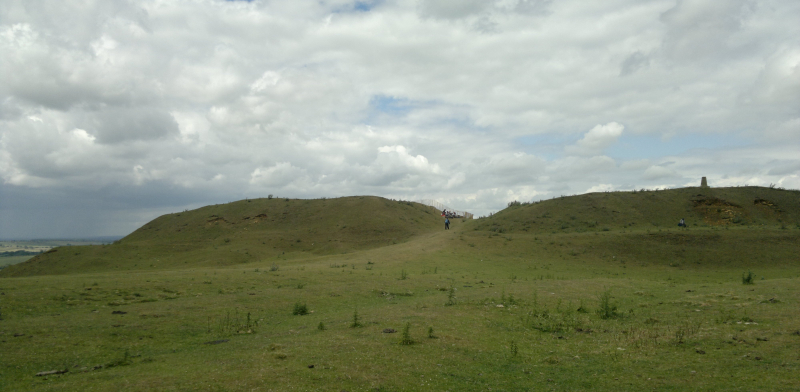
Photo: wikipedia 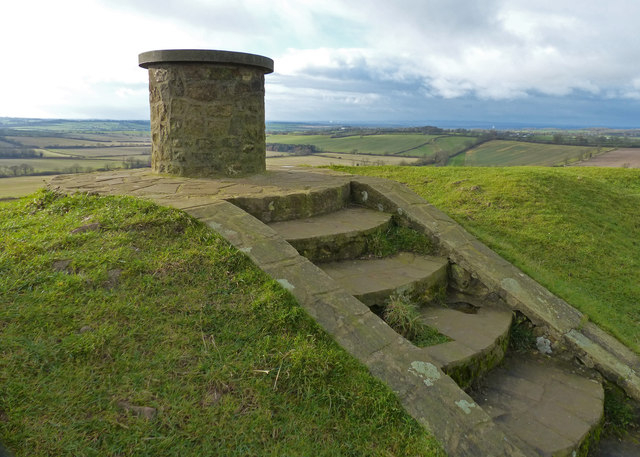
Photo: geograph.com -
In the English East Midlands city of Leicester, there once stood the Abbey of Saint Mary de Pratis, more recognizable as Leicester Abbey. The second Earl of Leicester, Robert de Beaumont, founded the abbey in the 12th century, and it eventually became the most affluent place of worship in Leicestershire. The abbey amassed a sizable quantity of territory as well as a number of manorial lordships through patronage and contributions. It also received the advowsons of numerous churches throughout England. A cell, or small dependent daughter house, was also maintained by Leicester Abbey at Cockerham Priory in Lancashire.
The passage of special privileges by both the English Kings and the Pope contributed to Abbey's success. These included exempting some property and animals from paying tithe as well as from sending representatives to the assembly. Despite its privileges and sizable landed estates, the abbey started to experience financial difficulties in the late 14th century and was compelled to lease off its properties. A slew of inept, dishonest, and wasteful abbots during the 15th and early 16th centuries added to the deteriorating financial condition. By 1535, the abbey's substantial income had been surpassed by even sizable debts.
Location: the city of Leicester, in the East Midlands of England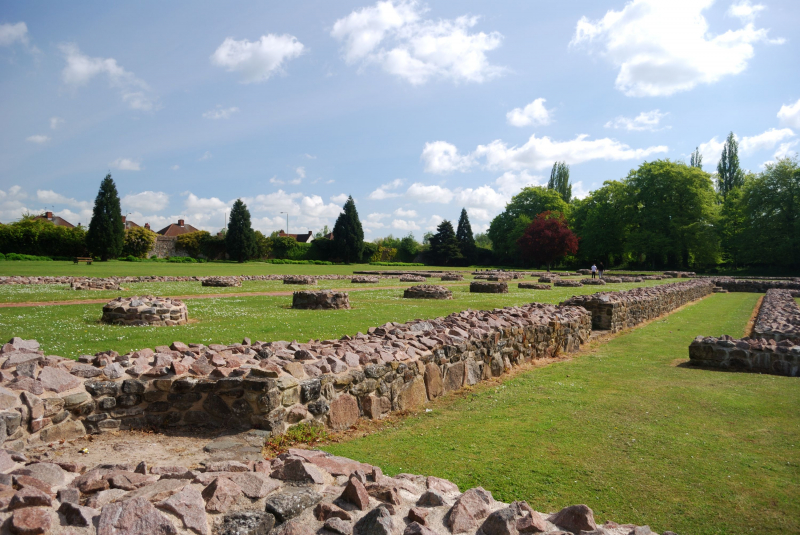
Photo: wikipedia 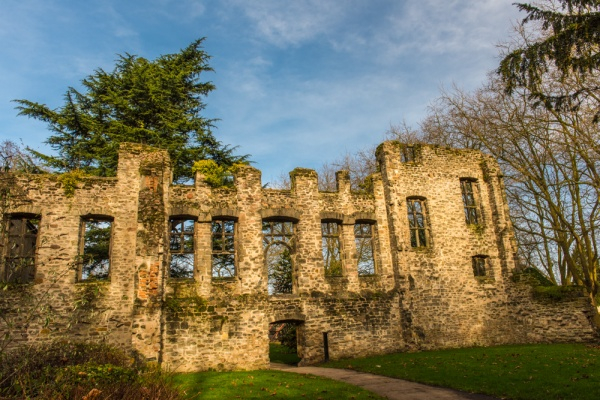
Photo: britainexpress.com -
The next position on the list of the most beautiful historical sites in Leicestershire is Ashby de la Zouch Castle, which was built in Norman times, and belonged to the Zouch family until the end of the 14th century. After that, it changed ownership several times before being acquired by Edward IV's Chamberlin, William, Lord Hastings, in 1462.
Ashby de la Zouch was transformed from a stately residence to a castle under Hastings' expansion and renovations, which included the towering 24-meter-tall Hastings Tower. Following its enlargement, it saw multiple royal visits from people like Henry VII and Charles I, and Mary, Queen of Scots was even briefly imprisoned there in 1569 while she was being held in England.
English Heritage is currently in charge of maintaining the Ashby de la Zouch Castle remains, which are a Grade I listed structure. Through engaging audio tours, sunken gardens exploration, and underground corridor tours, visitors may fully immerse themselves in this place's illustrious past.
Viewable are the ruins of the church, Great Hall, Great Chamber, and Kitchen Tower, all of which are composed of imposing stone constructions with once spectacular windows and arches. Great aerial views of the location and the neighborhood are available from the top of the Hastings Tower, which is still climbable.
Location: South St, Ashby-de-la-Zouch LE65 1BR, England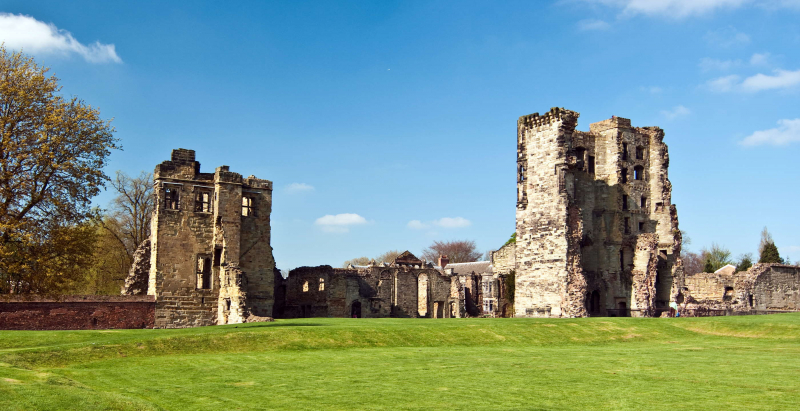
Photo: historic-UK.com 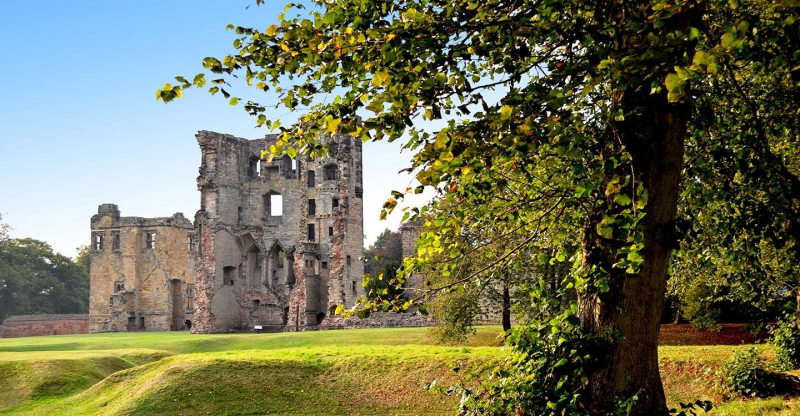
Photo: english-heritage.orrg.uk -
In Loughborough, England, there is a carillon and a war memorial. It is located in Queen's Park and a well-known landmark that can be seen from a great distance away. It is 46 meters (152 feet) tall.
Plans were finalized in 1919, and when they were finished in 1923, they were the first four-octave carillon in England. The idea was inspired by Belgium, where so many British personnel perished during the Great War of 1914–1918. Sir Walter Tapper created the carillon, which is currently grade II listed. The 47 bells in the carillon were all cast at the John Taylor Bell Foundry in Loughborough. William Moss and Sons Ltd. of Loughborough built the carillon.
On Sunday, July 22, 1923, Field-Marshal William Robertson and Bishop Theodore Woods of Peterborough led the ceremony of dedication. The memorial service featured a composition by Edward Elgar called Memorial Chimes, whose manuscript was bequeathed to Charnwood Borough Council in the 1950s and was found in 2012. The carillon was performed by city carillonneur Jef Denyn.
The Loughborough Carillon Tower and War Memorial Museum are located in the tower. The War Memorial Museum, which has three levels of military artifacts, is located in the tower. Artifacts from both World Wars and each branch of the military forces are on display. Visitors can ascend the building to the balcony to view the surroundings.
Location: Loughborough, Leicester, England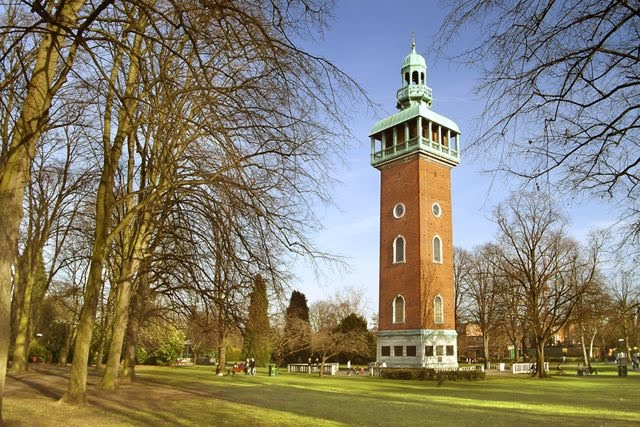
Photo: sites.google.com 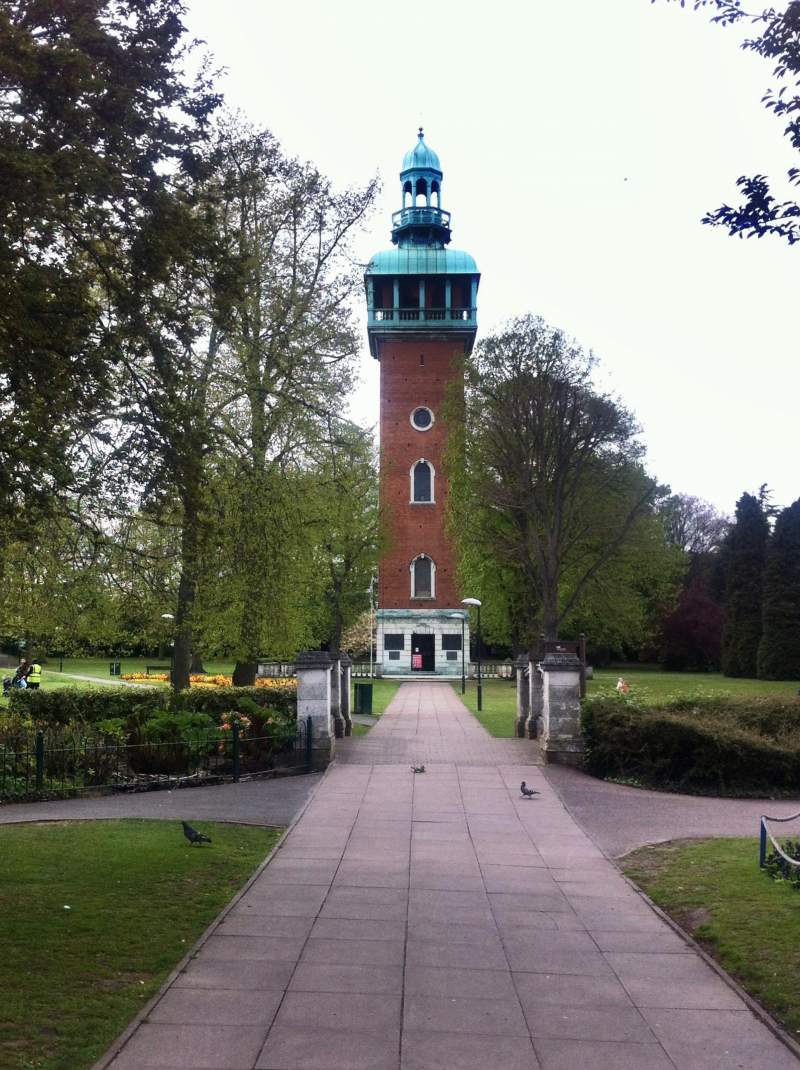
Photo: burnthewater.org -
One of the most beautiful historical sites in Leicestershire is Grace Dieu. Roesia de Verdun formed it between 1235 and 1241, and it was disbanded in October 1538. It was devoted to St. Mary and the Holy Trinity. The Friends of Grace Dieu Priory, a charitable organization of volunteers who manage the property today, raise money to maintain it and keep it free and open to the public.
In 1337, there were sixteen nuns living in the very sizable priory. It also had a hospital connection that provided care for twelve low-income patients. However, the priory did have certain peculiar customs, such as forbidding the nuns from ever leaving the grounds. Although the priory avoided the initial wave of lesser monasteries being dissolved, it was eventually closed in 1538.
The location was given to Sir Humphrey Foster after the Dissolution, who sold it to John Beaumont in 1539. He transformed the priory structures into a home, which he and his family lived in until Sir Ambrose Phillips, a wealthy lawyer who also constructed neighboring Garendon Hall, purchased it in 1684. The majority of the structures were demolished by Sir Ambrose, and by 1730, just two sections of the remaining structures still had roofs.
Location: Ashby Rd, Coalville LE67 5UG, England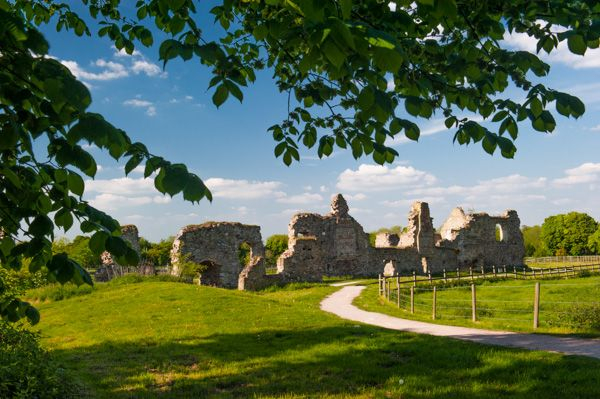
Photo: britainexpress.com 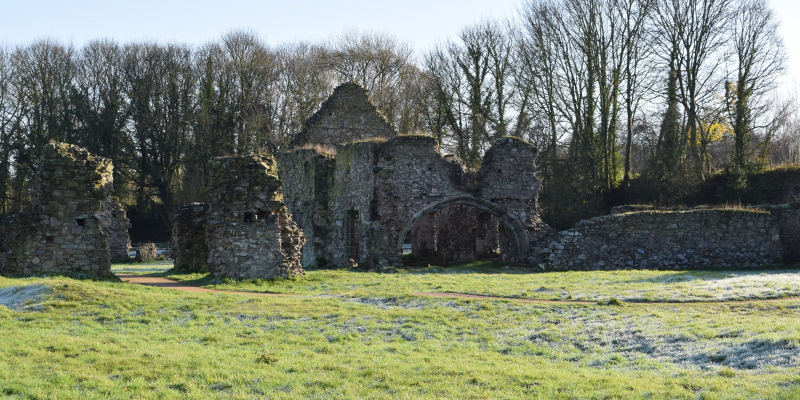
Photo: pastopresentarcheology.com -
Located 6 miles west of Grantham and 10 miles northeast of Melton Mowbray in Leicestershire, England, Belvoir Castle is a replica of a historic castle and stately home. Between 1801 to 1832, the beautiful Belvoir Castle was constructed. Three prior defenses had once stood on the location, the earliest dating back to Norman times (11th century). The Duke of Rutland, who still owns the land and the property, used it as their ancestral residence. One of the best specimens of Regency architecture in the nation is allegedly Belvoir Castle.
Public access is available to both the estate gardens and the castle. A wonderful tearoom and a variety of activities are also held on the property. Visitors have a choice of staying inside one of the various vacation cottages or outside in one of the estate's Bell Tents.The name of the castle implies a lovely vista. The 11th Duchess of Rutland gave journalist Phil Spencer a televised tour of the castle in 2018 and explained that the name Belvoir is a Norman import from the French-speaking invaders of the 11th century, but the local Anglo-Saxon population could not pronounce such a foreign word and preferred to refer to it as "Beaver Castle," a usage that is still used today.
Location: Grantham NG32 1PE, Leiceshire, England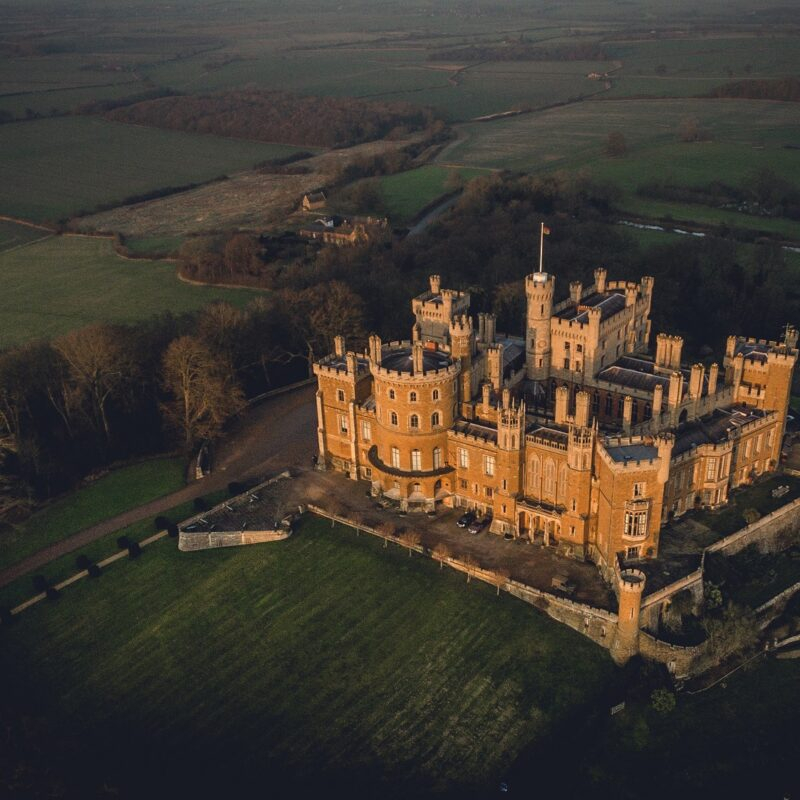
Photo: historichouse.org 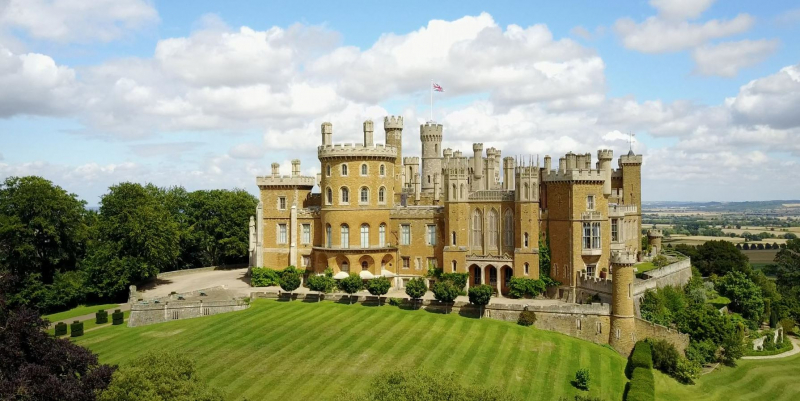
Photo: visitleicester.com





























